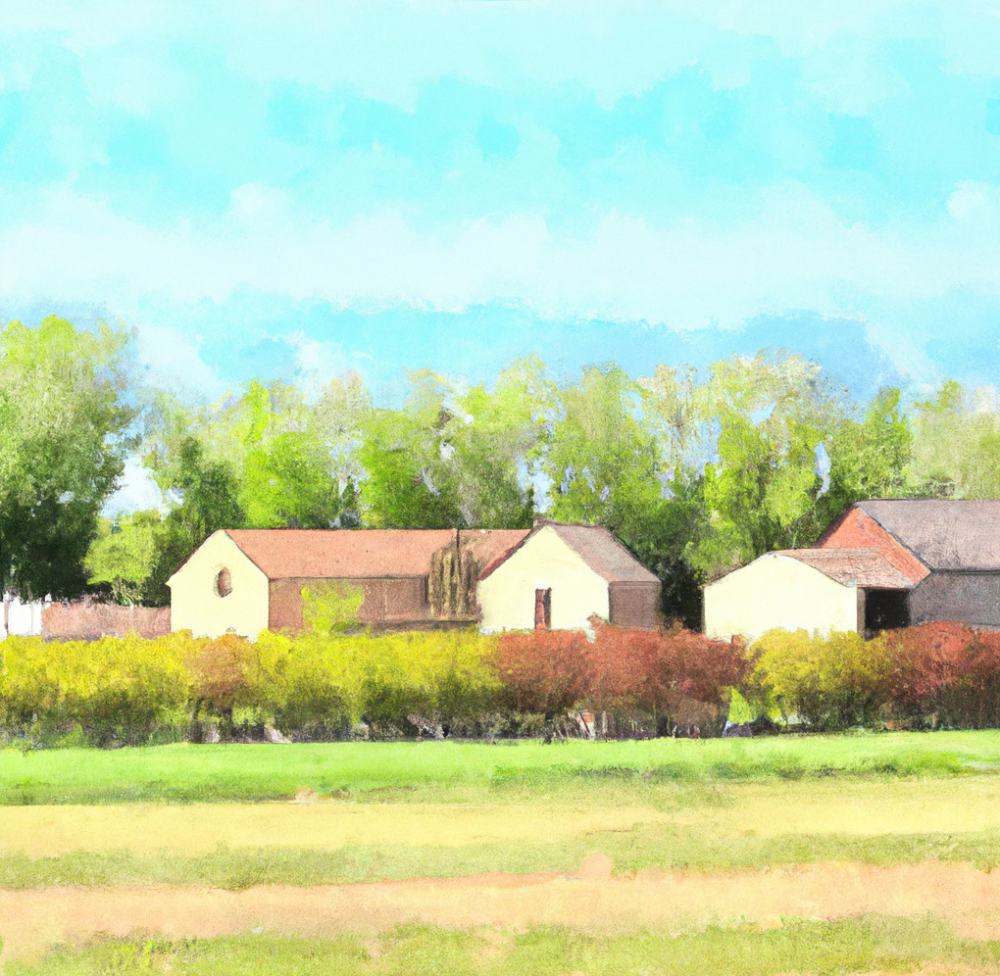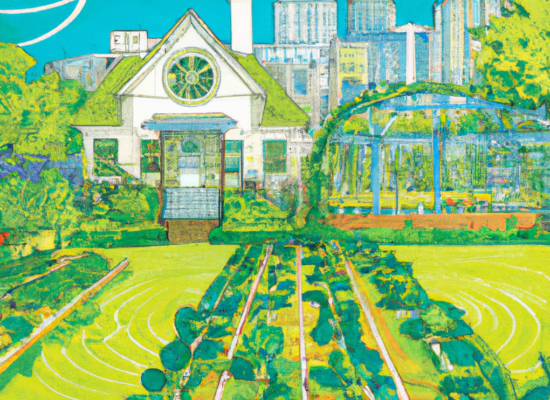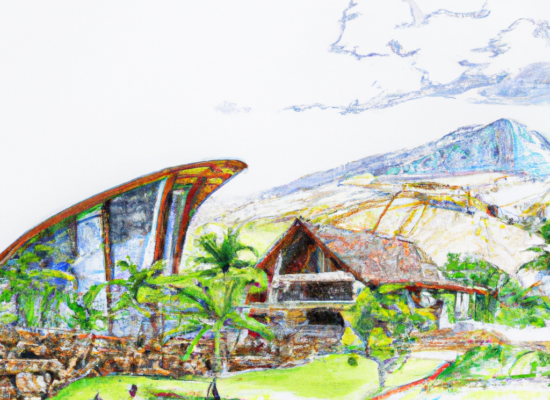Choosing the perfect homestead is a significant decision that requires careful consideration of various factors. The site you select will not only be your home but also the foundation of your self-sufficient lifestyle. Here are some key considerations to help you make an informed decision.
Climate and Geography: The Cornerstones of Your Homestead Selection

When it comes to selecting the perfect homestead, the importance of climate and geography cannot be overstated. These two factors will significantly influence your daily life, the type of crops you can grow, the kind of animals you can raise, and the overall sustainability of your homestead.
Understanding Climate
Climate refers to the long-term weather patterns in a particular area, including temperature, precipitation, humidity, and wind. The climate of your potential homestead will dictate the types of crops you can grow and the kind of livestock you can raise. For instance, a warm, dry climate might be suitable for growing drought-tolerant crops like millet or sorghum, while a cooler, wetter climate might be more suitable for crops like potatoes or cabbage.
Climate also influences your energy needs and the type of house you can build. A warm climate might be suitable for solar power, while a windy area could be perfect for wind energy. Additionally, the type of house you build will need to be suitable for the climate. For instance, in a hot climate, you might want to design your house to maximize natural ventilation, while in a cold climate, insulation and heating systems will be crucial.
The Role of Geography
Geography, on the other hand, will determine the layout of your homestead. The presence of hills, valleys, and bodies of water can influence where you place your house, garden, and animal shelters. It can also affect your access to resources like wood for building and heating. For instance, a homestead in a forested area might have ample access to firewood, while one in a prairie region might need to rely more on other forms of energy.
Geography also plays a role in the availability of water. A homestead near a river or lake will have a ready supply of water, while one in a dry area might need to rely on wells or rainwater collection. The quality of the soil, which is greatly influenced by the local geography, will also affect what you can grow.
Understanding the climate and geography of a potential homestead site is crucial in your selection process. These factors will influence not only your daily life but also the sustainability and productivity of your homestead. Therefore, it’s essential to research and consider these factors carefully before making your decision.
Soil Quality: The Foundation of a Healthy Homestead
The quality of the soil on your potential homestead is a critical factor that can significantly influence your homesteading success. Good soil is essential for growing crops and raising animals, and understanding its composition and health can provide valuable insights into its potential productivity.
Understanding Soil Composition
Soil is a complex mixture of both living and non-living materials. It is composed of broken-down rock, organic matter made up of decaying plants and animals, water, and air. These components help support plant life by providing them with nutrients, water, and air.
The soil is also teeming with billions of bacteria, fungi, and other microbes that form an elegant symbiotic ecosystem. These organisms are responsible for keeping the soil healthy by creating tunnels that help with aeration and drainage. They also consume decaying plant materials, which pass through their systems and fertilize the soil.
Soil Profile and Types
The soil profile refers to the different layers, or horizons, of soil. Each layer has distinct characteristics and plays a unique role in supporting plant life. The topsoil horizon, for instance, is rich in organic materials and is ideal for plants.
Soil types are primarily determined by their particle size, which affects their drainage and nutrient levels. The four basic types of soil include sand, silt, clay, and loam. Loam, a balanced mixture of sand, silt, and clay, is considered the best for growing plants as it retains moisture while allowing for adequate drainage and aeration.
Soil Health
Healthy soil is defined as the continued capacity of soil to function as a vital living ecosystem that sustains plants, animals, and humans. Healthy soil regulates water, sustains plant and animal life, filters and buffers potential pollutants, cycles nutrients, and provides physical stability and support.
Soil Testing
To determine the quality of the soil on your potential homestead, consider getting a soil test. This test can reveal the soil’s fertility and suitability for the crops you intend to grow. It can also detect the presence of contaminants that could affect its usability.
Understanding the quality of your soil is a crucial step in choosing your homestead. By taking the time to learn about your soil’s composition, health, and potential challenges, you can make informed decisions that will support a productive and sustainable homestead.
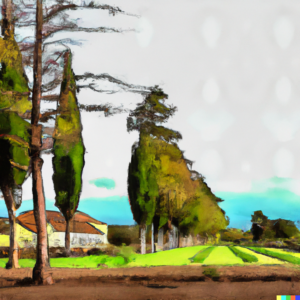
Infrastructure: The Backbone of Your Homestead
When choosing a homestead, the existing infrastructure is a crucial factor to consider. Infrastructure refers to the basic physical and organizational structures and facilities needed for the operation of a homestead. This includes buildings, water systems, roads, and more. The presence or absence of these elements can significantly impact your startup costs and the amount of work required to get your homestead up and running.
Existing Buildings
Existing buildings on the property can be a boon or a bane. On one hand, they can save you the cost and effort of constructing new ones. On the other hand, if they are in poor condition, they may require significant renovation or even demolition, which can be costly. Consider the condition, layout, and functionality of any existing buildings. Are they suitable for your needs, or will they require modifications?
Water System
Water is a fundamental necessity for any homestead. Check if there is an existing water system on the property. This could be a well, a spring, or access to a municipal water supply. If there isn’t, you’ll need to install one, which can be a significant expense. Also, consider the quality and reliability of the water source. Is it prone to contamination or drought?
Access Roads
Good access roads are essential for a homestead. They allow for easy transportation of goods and materials, and they provide access for emergency services if needed. Check the condition of the existing roads. Are they well-maintained? Are they passable in all weather conditions? If not, you may need to invest in road improvements.
Electrical Power
Electricity is another critical infrastructure element. Some rural properties may not be connected to the grid, requiring you to consider off-grid solutions like solar panels, wind turbines, or generators. Each of these options has its pros and cons, and your choice will depend on factors like your energy needs, budget, and the local climate.
Wastewater Systems
Wastewater systems, such as septic tanks, are essential for managing household waste. If there’s an existing system, have it inspected to ensure it’s in good working order. If there isn’t, you’ll need to install one, which can be a significant expense. Alternatively, you could consider composting toilets, which are more eco-friendly and require less maintenance.
Phone Signal and Internet Access
In today’s digital age, having a reliable phone signal and internet access is almost as essential as having electricity and water. Check the strength of the phone signal on the property and find out what internet services are available. If coverage is poor, you may need to consider solutions like satellite internet or cell phone signal boosters.
Access to Resources
When choosing the perfect homestead, it’s essential to consider the availability of resources. This includes not only the natural resources available on the land itself but also the proximity to necessary supplies and services.
Water is one of the most critical resources for any homestead. You’ll need a reliable source for drinking, cooking, bathing, irrigation, and potentially for livestock. If a natural water source isn’t available on the property, you may need to consider options such as drilling a well or setting up a rainwater catchment system. It’s also important to consider the quality of the water source and whether it’s prone to contamination or drought.
Another key resource is firewood, particularly if you plan to heat your home or cook with wood. If your property is forested, you may have a ready supply. If not, you’ll need to consider where you can source firewood and the cost and logistics of getting it to your property.
Building materials are another consideration. If you’re planning to build or expand structures on your homestead, having access to affordable, sustainable building materials can be a significant advantage. This might include locally milled lumber, stone, or even clay for natural building methods.
Beyond these basic resources, think about your proximity to other necessities. How far are you from the nearest grocery store or farmer’s market? What about hardware stores, feed and seed suppliers, or farm equipment repair services? While the goal of homesteading is often self-sufficiency, there will likely be items and services you need to source from the surrounding community.
In addition to these practical considerations, it’s also important to think about safety and security. While many people are drawn to homesteading because of the peace and solitude it can offer, living in a remote area can also present challenges. For instance, how quickly could emergency services reach your property if needed?
Furthermore, in the event of societal breakdown or civil unrest, being far from large metropolitan areas can be a significant advantage. Urban areas can become hotspots for conflict and resource scarcity in such situations. On the other hand, more remote areas may be less likely to be targeted, and a self-sufficient homestead can provide a level of security and independence.
Safety and Security Considerations for Your Homestead
When choosing a location for your homestead, safety and security should be at the forefront of your considerations. This includes both natural and human-made risks.
Natural Disasters: Depending on the geographical location, certain areas are more prone to specific natural disasters. For instance, coastal regions may be at risk of hurricanes and tsunamis, while areas near fault lines may be prone to earthquakes. Some regions may be susceptible to wildfires, especially those with dry climates and abundant vegetation. It’s essential to research the common natural disasters in the area you’re considering for your homestead. Understanding these risks can help you prepare adequately, whether that means building your home to withstand certain conditions, setting up early warning systems, or having an evacuation plan in place.
Proximity to Industrial Areas: Living near industrial areas can pose several risks. Industrial accidents, such as chemical spills or explosions, can have severe consequences for nearby residents. Additionally, industrial areas often have higher levels of air and water pollution, which can affect your health and the health of your crops and animals. It’s crucial to be aware of any nearby industrial facilities and understand the potential risks associated with them.
Proximity to Busy Roads: Living near busy roads can also pose safety risks. Traffic noise can be disruptive, and there’s also the risk of accidents, especially if you have children or animals. Additionally, roads can be a source of pollution, affecting air quality and potentially contaminating water sources.
Safety in Case of Societal Breakdown: While it’s not pleasant to think about, it’s also worth considering the safety of your location in the event of societal breakdown, such as riots or civil unrest. Homesteads located near large metropolitan areas may be at higher risk in these situations. In contrast, more remote locations can offer a degree of isolation and protection. However, they also come with their own challenges, such as limited access to medical care and other services.
When considering safety and security, it’s also important to think about your home’s design. For instance, you might want to consider features like a secure perimeter fence, security cameras, or a safe room in your home.
Local Regulations, Community Attitudes, and Constitutional Considerations
Choosing the perfect homestead location is a multifaceted decision that requires careful consideration of various factors. Beyond the physical characteristics of the land, it’s crucial to understand the local regulations, community attitudes, and constitutional considerations that can impact your homesteading journey.
Understanding Local Regulations
Before you finalize your homestead location, it’s crucial to familiarize yourself with the local regulations. These can include building codes, zoning laws, and restrictions on certain types of farming practices. Understanding these rules will help you avoid potential legal issues and ensure that your homesteading activities are in compliance with local laws.
Community Attitudes and Support
Community attitudes towards homesteading can vary. Some communities are more supportive of self-sufficient lifestyles than others. They may have local farmers’ markets, community gardens, or cooperative extension services that provide resources and education for farmers and homesteaders. However, some communities may be less welcoming to homesteaders, viewing homesteading activities as a nuisance or an eyesore.
The Importance of Local Culture and Economy
The local community’s attitudes towards homesteading and sustainable living can either support or hinder your efforts. A community that values self-sufficiency, environmental stewardship, and sustainable living can provide a wealth of knowledge, resources, and assistance, making your journey more enjoyable and successful.
Local traditions, customs, and the way of life also contribute to the community’s culture. A rural culture with a strong connection to the land and nature can enhance your homesteading experience. Conversely, an urban culture might have different priorities and values that could require adjustments on your part.
The local economy can also impact your homesteading experience. A thriving community with a robust local economy can provide job opportunities if you need to supplement your homesteading activities with paid work. It can also affect the cost of living and the price of land.
Constitutional Considerations
The local attitude towards the Second Amendment and constitutional rights is another important consideration. In some states and counties, there is strong support for these rights, which can be crucial for many homesteaders. For instance, the right to bear arms can be essential for protecting your homestead and hunting for food. Similarly, constitutional rights such as property rights can impact your ability to use your land as you see fit.
Budget
Budget Considerations for Your Homestead
When embarking on your homesteading journey, one of the most critical factors to consider is your budget. The financial aspect of homesteading is multifaceted, encompassing not only the initial cost of the land but also the cost of improvements, constructions, and ongoing expenses.
Initial Costs

The initial cost of the land can vary significantly depending on various factors such as location, size, and features of the land. For instance, land in more remote areas is often less expensive than land closer to urban centers. Similarly, land with more desirable features, such as a water source or fertile soil, may command a higher price.
When considering the cost of the land, it’s also essential to factor in any necessary improvements or constructions. For example, if the land doesn’t have an existing home or other structures, you’ll need to budget for building a house and other necessary buildings like barns or sheds. Similarly, if the land doesn’t have access to utilities, you may need to invest in infrastructure like wells, septic systems, or solar panels.
Ongoing Costs
In addition to the initial costs, there are also ongoing expenses to consider. These can include property taxes, utility bills, and maintenance costs. Property taxes can vary widely depending on the location and value of your property. Utility bills can include costs for water, electricity, and waste disposal, although some of these costs can be mitigated through sustainable practices like rainwater collection and solar power.
Maintenance costs are another significant ongoing expense. These can include costs for repairing and maintaining buildings, equipment, and infrastructure, as well as costs for maintaining the land itself, such as soil amendments and pest control.
Planning for the Unexpected
Finally, it’s crucial to have a contingency fund for unexpected expenses. Homesteading often involves unforeseen challenges and expenses, from equipment breakdowns to crop failures. Having a financial cushion can help you navigate these challenges without jeopardizing your homesteading journey.
Budgeting for a homestead requires careful planning and consideration of both initial and ongoing costs. By taking the time to thoroughly understand and plan for these costs, you can make your dream of a self-sufficient lifestyle a reality without breaking the bank.

Personal Preferences: Crafting Your Dream Homestead
When it comes to choosing the perfect homestead, personal preferences play a significant role. After all, this is the place where you will be spending a significant amount of time, and you want it to be a place that you love. It’s not just about survival but thriving and living in harmony with nature.
Your personal preferences might include a scenic view, proximity to a body of water, a certain amount of privacy, or even the type of wildlife in the area. For some, the dream is a cabin in the woods, while for others, it’s a farmhouse in the rolling countryside. Some might prefer a mountain view, while others dream of living by a lake or river. These preferences are deeply personal and can significantly influence your choice of a homestead location.
In addition to the physical characteristics of the land, your lifestyle preferences also come into play. For instance, if you’re an avid hiker, you might prefer a location with access to trails. If you love fishing, proximity to a river or lake would be ideal. If you’re into bird watching or wildlife photography, a property with diverse wildlife might be on top of your list.
Privacy is another important consideration for many homesteaders. If you’re looking to escape the hustle and bustle of city life, you might prefer a location that’s off the beaten path. However, keep in mind that a remote location might also mean being far from amenities and services, so it’s a balance that you’ll need to strike.
One key aspect of personal preferences involves the climate. Do you prefer a warm, sunny climate, or do you love the change of seasons? Your preference could guide you towards certain regions. For instance, if you can’t imagine a life without snow, a homestead in the southern states might not be the best fit for you.
Finally, consider your long-term plans. If you’re planning to grow your own food, ensure the land can support your gardening or farming needs. If you’re planning to raise livestock, you’ll need enough space and the right kind of terrain.
Choosing the perfect homestead is a significant decision that requires careful consideration of various factors. It’s not a decision to be taken lightly, but with careful planning and consideration, you can find the perfect site that meets all your needs and supports your dream of a self-sufficient, sustainable lifestyle. Remember, the journey to a sustainable lifestyle is as important as the destination. Enjoy the process, learn from it, and look forward to the rewarding experience of living in harmony with nature on your homestead.
Future Expansion: Planning for Growth and Sustainability
When embarking on the journey of homesteading, it’s crucial to consider not just your immediate needs, but also your future ones. The homestead you start with might be small, perhaps with a garden and a few chickens, but as your skills, resources, and aspirations grow, you might want to expand your operations. This is why it’s essential to ensure that the site you choose has enough space for future expansion and the potential to adapt to your evolving needs.
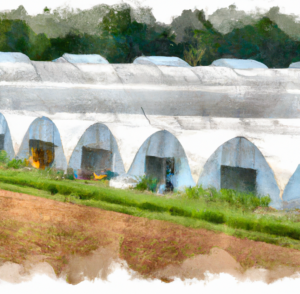
Building Additional Structures
As your homestead grows, you may find the need to add more buildings. These could range from barns for livestock, greenhouses for year-round cultivation, workshops for various crafts, or even guest houses. When choosing your homestead site, consider the potential building sites. Look for areas where you could construct additional structures without disrupting your existing operations. Also, consider the specific requirements of each building. For instance, a greenhouse would need a location with ample sunlight, while a workshop might need to be closer to your home for convenience.
Integrating Permaculture and Aquaculture Systems
Your future expansion plans might also include the integration of permaculture or aquaculture systems. Permaculture is a design system for sustainable living and farming that creates synergistic relationships between plants, animals, and people. A well-designed permaculture system can provide a diverse range of food and other resources with minimal input. On the other hand, aquaculture involves the cultivation of aquatic organisms, such as fish or shellfish, providing a valuable source of protein for your homestead.
When planning for these systems, consider their specific requirements. A permaculture system might require a variety of different microclimates, which could be provided by a combination of sunny, shady, wet, and dry areas. An aquaculture system would require a reliable source of water and a suitable location for a pond or tank.
Implementing a Greywater System
Another crucial aspect of future expansion is the potential for implementing a greywater system. Greywater, which is wastewater from non-toilet plumbing fixtures like showers, basins, and kitchen taps, can be used for irrigation and toilet flushing. This system can significantly reduce your homestead’s water usage, contributing to its sustainability.
When planning your greywater system, consider the needs of your plants and the characteristics of your soil. Different plants have different water needs, and some are more tolerant of greywater than others. The effectiveness of a greywater system can also be influenced by the type of soil in your garden. For instance, sandy soils drain water quickly and are well-suited to greywater irrigation, while clay soils drain slowly and may become waterlogged.
Planning for New Farming Systems
Future expansion could also involve the addition of new farming systems. For instance, you might decide to build a greenhouse to extend your growing season, or you might want to start raising livestock. When planning for these types of expansions, consider how they will fit into your existing operations and how they will affect your resource needs. For example, a greenhouse will require a source of heat, which could be provided by a wood-burning stove, a solar heater, or an electric heater. If you decide to raise livestock, you will need to consider the availability of feed, the need for fencing and shelters, and the potential impact on your land and water resources.
Planning for future expansion is a crucial aspect of homesteading. By considering your future needs and planning accordingly, you can create a homestead that is not only sustainable and productive now, but also has the potential to grow and evolve with your needs in the future. Remember, a successful homestead is not just about surviving, but about thriving and creating a harmonious relationship with the natural environment. It’s about building a lifestyle that aligns with your values and aspirations, and that can adapt and grow with you over time. It’s about creating a place where you and your family can live in harmony with nature, contributing to the health of the planet while also enjoying the fruits of your labor. So, as you plan your homestead, keep your eyes on the future, and imagine the possibilities that await.
 Copyright secured by Digiprove
Copyright secured by Digiprove 
